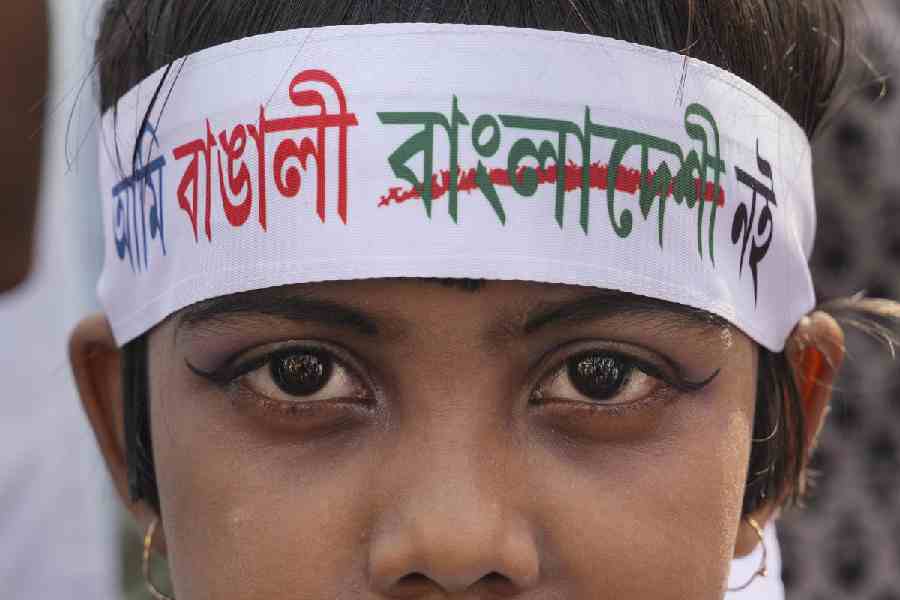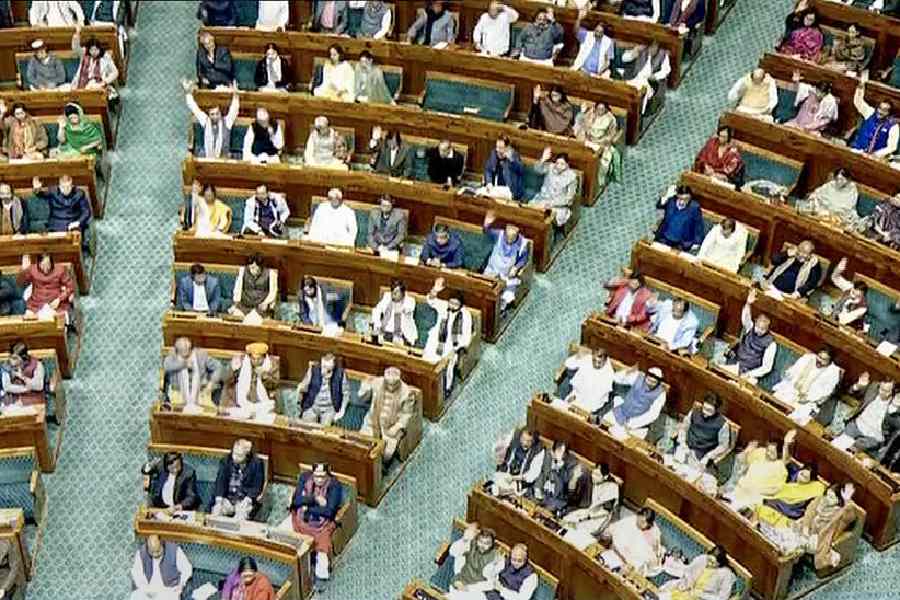 |
| A moment from the play, Suramaar Gongaachiloni, at Nagaon District Library. Picture by Eastern Projections |
The Guwahati chapter of the Indian People’s Theatre Association (IPTA), led by singer Dilip Sharma, observed the death anniversary of Hemanga Biswas at the District Library auditorium in Nagaon on November 22.
The IPTA staged a play, Suramaar Gongaachiloni, based on the crisis of cultural identity, human values and the life and ideals of Hemanga Biswas.
A series of musical tributes by singers Bibhu Ranjan Choudhury, Ghana Deka and Dilip Sharma added colour to the event.
Written and directed by Naren Patgiri, Suramaar Gongaachiloni, was a passionate narration of the decadence of cultural values and the concern of a group of activists.
A club forms the backdrop of the play. Instead of painstakingly composed dialogues, the characters bring out the essence of the play by depicting snippets of life. A painter wielding his brush on canvas, a musician creating magic with the harmonium and three young boys and a girl rehearsing for a play portray socio-political events in a subtle manner.
The play reminds one of the contributions of Hemanga Biswas in wiping out communal tension and conflict between the Assamese and Bengali speaking people circulating communist ideology in India, his efforts to ease Sino-Indian relations and highlight the role of the US and other capitalist forces.
The play also sharply criticises the vulgarity of the so-called popular culture.
The content of the play is skillfully depicted through brilliant performances by the cast, comprising Bibhu Ranjan Choudhury, Kiron Shankar Roy, Dhanjit Boro, Manisha Kalita, Gautam Das, Naba Sarma, Kaushik Borbora and Debashish Chakrabortty. But it was actress Dharitri Kalita who stole the limelight.
Music and choreography build the pathos of the play. Live rendition of at least seven evergreen Hemanga Biswas numbers by Bibhu Ranjan Choudhury, Ghana Deka and Dilip Sharma left its mark on the audience.
Ratna Choudhury and Dharitri Kalita’s choreography, especially in the number Shankhachiler Gaan, adds to the USP of the play. Patgiri and Siddhartha Mukherjee deserve kudos for direction and lighting.











